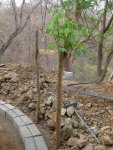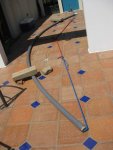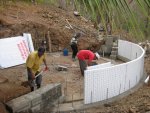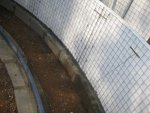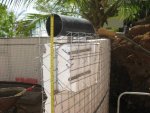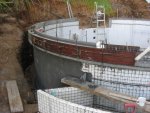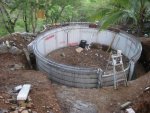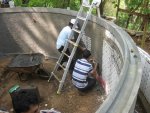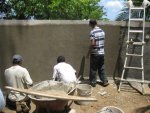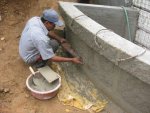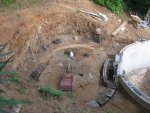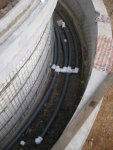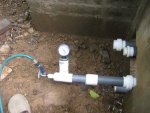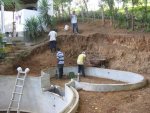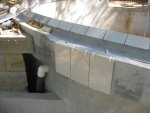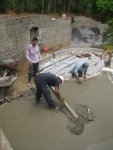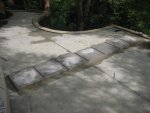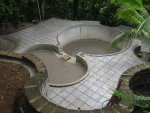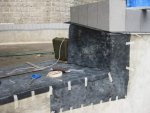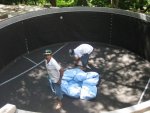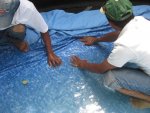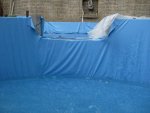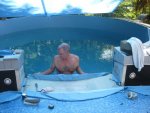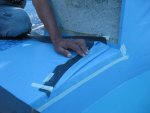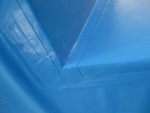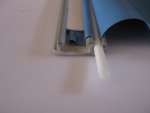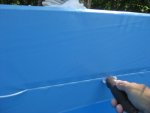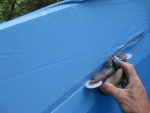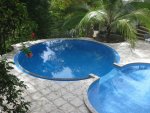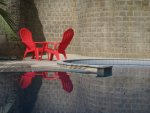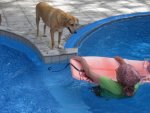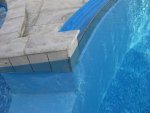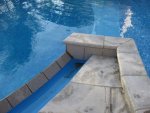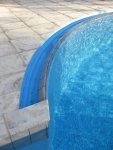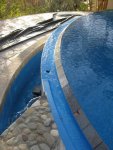Re: DIY Pool Build - Latin Latitudes - In Ground, Perimeter Wet Edge, Vinyl Lined
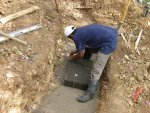
First block is set for the foundation (wall base/footing) for the round pool. The construction process is fairly complicated. We first had to set about a dozen of these blocks in a quarter circle. They provide the reference level for various retaining walls, the lower patio, the catchment basin, the round pool, the upper patio and the oval pool. The excavation work was all by hand (picks, breakup bars, shovels) and pretty hard slugging. I only wanted to move dirt once if at all possible. Material from the pool basin was used as back fill behind retaining walls and to fill/level the patio spaces. No one element could be built first and all at once. It was a continuous cycling of build a bit of retaining wall, excavate, backfill, level, install pool foundation/walls, repeated over and over again.
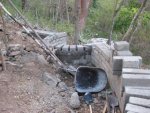
Lower patio retaining wall. Just over the right-hand corner of the tree-well you can see the top of our 10K gallon rain water cistern. It was built using the quarried blocks seen in the foreground, and waterproofed with a welded-seam "bag" made of 10 mil plastic.
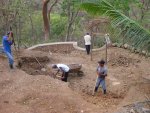
With the lower patio filled in behind its retaining wall, we get down to some serious excavation for the round pool.
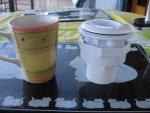
Pretty well all fittings and equipment were ordered from online pool supply stores in the U.S. and Canada. We would have the items shipped to friends for them to deliver when visiting us. In this case I wanted to provide someone with an idea of how big this fitting was and if they had space for 12 of them in their suitcase.
Foundation blocks for round pool. Channel cut into blocks to lay in re-bar for added strength.
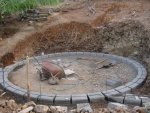

First block is set for the foundation (wall base/footing) for the round pool. The construction process is fairly complicated. We first had to set about a dozen of these blocks in a quarter circle. They provide the reference level for various retaining walls, the lower patio, the catchment basin, the round pool, the upper patio and the oval pool. The excavation work was all by hand (picks, breakup bars, shovels) and pretty hard slugging. I only wanted to move dirt once if at all possible. Material from the pool basin was used as back fill behind retaining walls and to fill/level the patio spaces. No one element could be built first and all at once. It was a continuous cycling of build a bit of retaining wall, excavate, backfill, level, install pool foundation/walls, repeated over and over again.

Lower patio retaining wall. Just over the right-hand corner of the tree-well you can see the top of our 10K gallon rain water cistern. It was built using the quarried blocks seen in the foreground, and waterproofed with a welded-seam "bag" made of 10 mil plastic.

With the lower patio filled in behind its retaining wall, we get down to some serious excavation for the round pool.

Pretty well all fittings and equipment were ordered from online pool supply stores in the U.S. and Canada. We would have the items shipped to friends for them to deliver when visiting us. In this case I wanted to provide someone with an idea of how big this fitting was and if they had space for 12 of them in their suitcase.
Foundation blocks for round pool. Channel cut into blocks to lay in re-bar for added strength.



